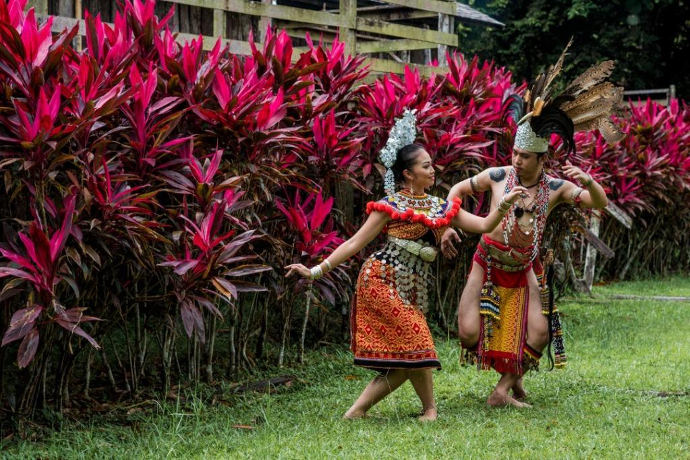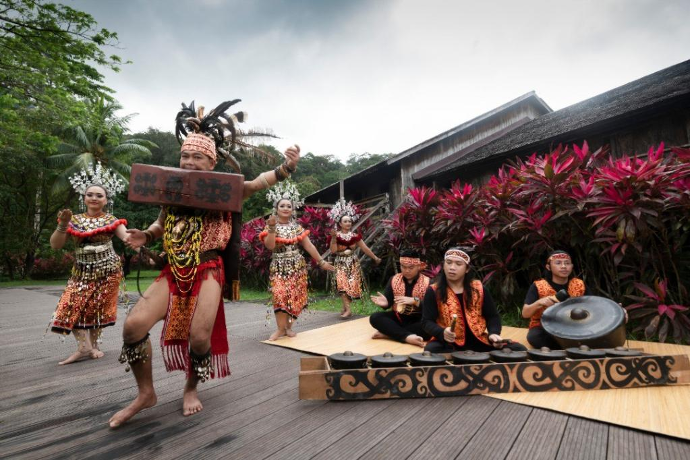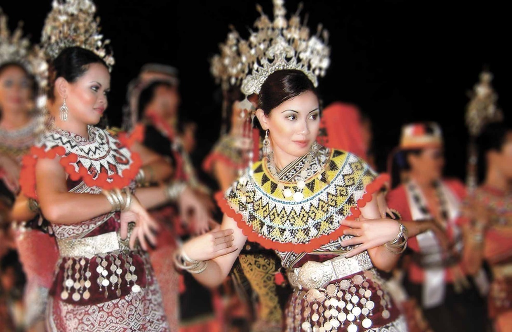Ngajat : The Pride of Iban Heritage
Ngajat, or to dance, in the Iban language, is a grouping of dances practiced by the Iban tribes. They are the largest ethnic group in Sarawak. Ngajat is deeply rooted in their culture, as it is used in a long tradition of rituals, celebration and war. It is a dance that holds pride in Iban identity and heritage, steeped in ancestral beliefs and strict rituals. It is said that the Iban ngajat was taught to the community by two ghostly spirits named Ulup Batu Lichin and Bujang Indang Lengain.
Ngajat is an umbrella term for the different dances that is practiced Iban culture. The different types of ngajat each holds a sacred meaning and reason in Iban culture. There are two main categories of ngajat according to gender. Ngajat Indu is dance performed by women, with movements that are slow and gentle. Whereas the men perform Ngajat Laki with quick and aggressive moves.
The ngajat is a certainty during Gawai(the harvest festival) as it is part of their ritual tradition. It is believed that ngajat performed at this time asks their god for bountiful blessings and calms the spirits of the dead who are visiting.
There are strict rules, even for passing down the knowledge to younger generations. The dance choreography is received through the choreographer’s dreams. Alas, it can only be taught to others if that person has received a dream from the heavenly beings.
Typically, there 3 main ngajat that are performed for mainstream audiences today. They are the ngajat ngalu temuai, ngajat semain, and ngajat manggung lesung.
Ngajat ngalu temuai, or the ‘welcoming dance’ is the most commonly performed ngajat during festive occasions such as Gawai, weddings and even sponsored events and venues. This is due to the very purpose of the dance, which according to tradition, is to entertain and thank visitors.
Ngajat Semain also known as ngajat pua kumbu, is a dance strictly for women. The pua kumbu is a ceremonial cloth made out of cotton, adorned with colourful traditional patterns. This ngajat heavily features the pua kumbu in its choreography as the women hold it up to prominently display it whilst dancing.
Less commonly seen in public events is the ngajat lesung. It is only performed by men, where a dancer carrying a wooden mortar with his teeth whilst dancing. The mortar weighs at least 7 kilograms, and the dancer moves with a flowing grace that is inspired by the hornbill bird. It showcases the strength and skill of the men, especially in celebration after a battle.
The most accessible way for visitors to experience the ngajat outside of public events, is at the Sarawak Cultural Village which has traditional performances including ngajat twice daily. Another method would be to experience the hospitality and culture of the community through a home-stay program at an Iban longhouse.
References:
1. Kiyai @ Keai, G., Tugang, N., & Seer, O. (2020). Ngajat Iban: A Cultural Study. KUPAS SENI: Jurnal Seni Dan Pendidikan Seni, 8(2), 70-83. https://doi.org/10.37134/kupasseni.vol8.2.6.2020

(An Iban Man and Woman Dancing in Traditional Attire-Image taken from the Malaysian Association of Art and Cultural Workers (MACPA) )

(Ngajat Lesung - Image taken from the Malaysian Association of Art and Cultural Workers (MACPA) )
(Ngajat Indu - Image taken from the Borneotalk.com)
